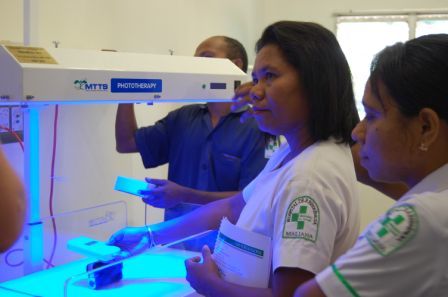‘There is a Democratization of Health Care Going on Around the World’: IPIHD annual forum yields lessons on empowerment, tools and location
The global health innovation space can be crowded and confusing. Everyone is looking for ways to expand access to quality, affordable care, but one-size-fits-all solutions are nearly impossible to find. An innovation that works well in Africa is not always going to be successful in Mexico or Vietnam or India. The recent International Partnership of Innovative Healthcare Delivery (IPIHD) Annual Forum held in Washington, D.C., explored the topic of health innovation replication across populations and from our vantage point (the author is IPIHD’s project manager), there are some guideposts that can help innovators, funders and policymakers get a better handle on how to work effectively in the health innovation space.
IPIHD’s mission is to increase access around the world to affordable, quality health care. We do this by identifying the most promising innovative health care entrepreneurs around the world and then helping these organizations scale up their work. Our annual forum is an opportunity to bring our vibrant community of 55 innovators operating in 47 countries together with corporate supporters, social impact investors, academics and other leaders across health care and impact investing and learn together.
The highlight of the event for many attendees was meeting our new cohort of 2015 IPIHD innovators. These entrepreneurs are working in Mexico, Brazil, Colombia, India, Kenya, Vietnam and many other countries on problems as diverse as health education for family members of inpatients, menstrual health, emergency training for health workers and new ways of delivering care through community kiosks.
From our vantage point, three main themes emerged from their work and the discussions we had throughout the event.
Lesson 1: Empower individuals to take charge of their health
There is a democratization of health care going on around the world. Entrepreneurs are increasingly realizing that when the populations they serve are empowered with the information, tools and resources they need, health outcomes can improve, even in the absence of formal settings, systems and providers.
For example, in India, Noora Health, the brainchild of a group of students working at Stanford University, is leveraging the latest in digital education technology to deliver personalized, disease-specific education to family members of hospitalized patients. Bodhi Health is pioneering web-based learning management systems that can train low-literacy community health workers.
Similarly, in Mexico, PACE MD is offering emergency health training to health workers in underserved communities throughout the country, including traditional midwives typically seen as working outside the established health care system but who attend most of the births in the places they serve.
In Kenya, the Safe Water and AIDS Project (SWAP), an NGO in Western Kenya, engages local women to promote and sell health and hygiene products such as pediatric iron supplements and water purification products door to door, empowering women to earn a living and giving the communities they serve the tools they need for good health. ZanaAfrica is working to give girls in Kenya access to menstruation supplies they need but that are often financially out of reach.
Lesson 2: Use the right tool for the job
Entrepreneurs working in places with limited resources have a talent for finding the right tool for the right job that all health systems could learn from. Looking at lower-tech, lower-cost solutions often expands access without sacrificing quality and ultimately saves lives.

(Hospital trainees learning about MTTS neonatal equipment, left.)
In Africa, MicroClinic Technologies developed ZiDi, a mobile application that helps clinics and hospitals in Africa monitor and evaluate their services and improve primary care.
Lesson 3: Meet people where they are
Health care systems are too often built around providers and equipment and not the needs of patients. Entrepreneurs in emerging economies are flipping this thinking and building their services around the way people live their lives – taking health care to the places where they live, work and play.
In India, SevaMob provides primary health care and insurance via mobile clinics to groups on a monthly subscription model and has developed an online health exchange that connects patients with health care providers. In South America, Dr. Consulta in Brazil integrates primary and secondary health services in one location, providing patients with access to services 25 times faster than public options. BIVE in Colombia offers a health care membership network providing individuals with services at up to 70 percent lower prices than regular health insurance rates. In Kenya, Afya Research is operating kiosks located in rural villages, making it easier for community members to access services such as well-baby and antenatal visits.
At IPIHD, we want to help make sense out of the confusion and chaos of global health. To do that, we need all the help we can get. If you’re interested in learning with us, come find us or contact me at anne.wales@duke.edu.
Anne Katharine Wales is the project manager for the International Partnership for Innovative Healthcare Delivery.
- Categories
- Environment, Health Care
